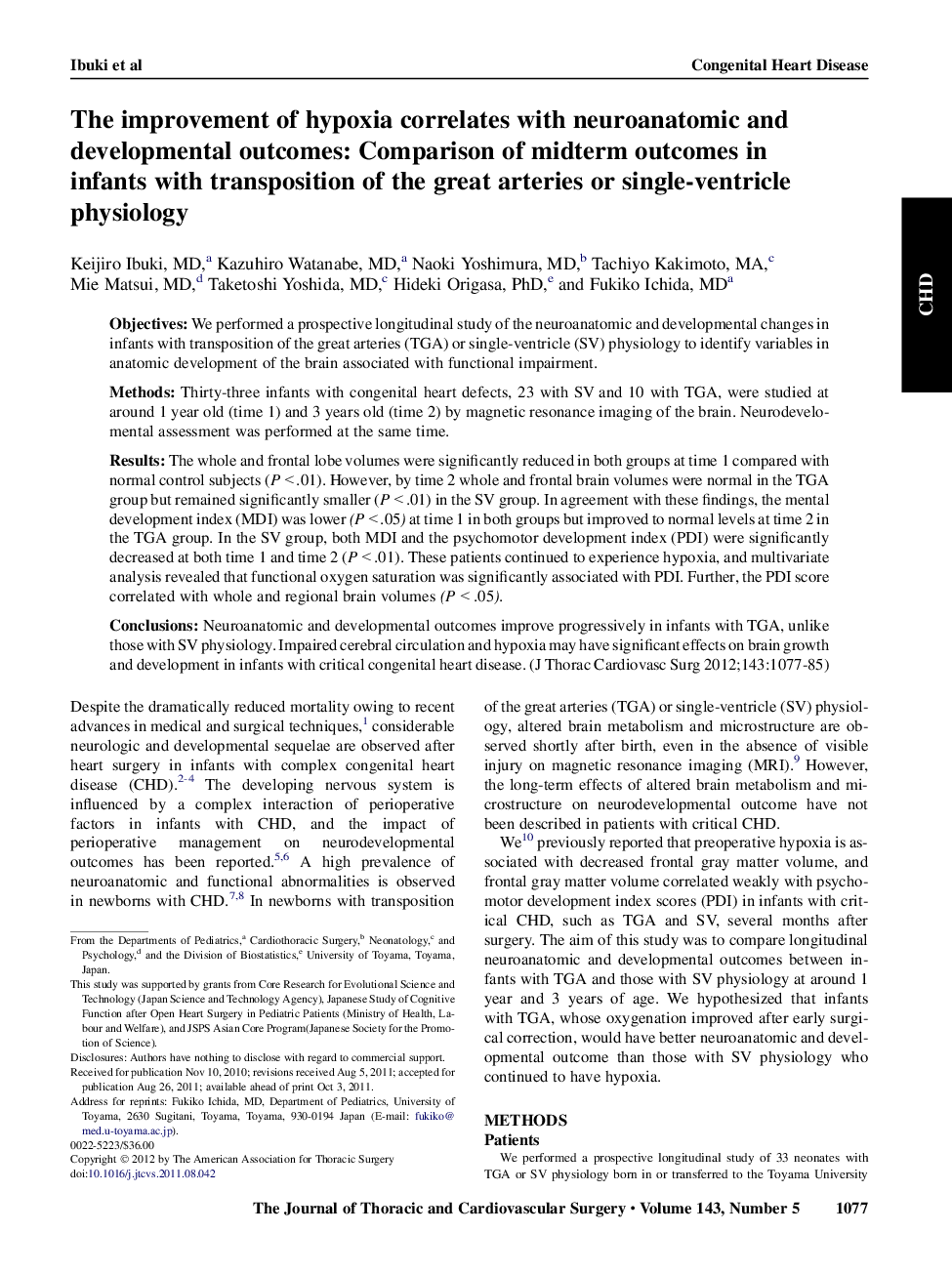| Article ID | Journal | Published Year | Pages | File Type |
|---|---|---|---|---|
| 2982152 | The Journal of Thoracic and Cardiovascular Surgery | 2012 | 9 Pages |
ObjectivesWe performed a prospective longitudinal study of the neuroanatomic and developmental changes in infants with transposition of the great arteries (TGA) or single-ventricle (SV) physiology to identify variables in anatomic development of the brain associated with functional impairment.MethodsThirty-three infants with congenital heart defects, 23 with SV and 10 with TGA, were studied at around 1 year old (time 1) and 3 years old (time 2) by magnetic resonance imaging of the brain. Neurodevelomental assessment was performed at the same time.ResultsThe whole and frontal lobe volumes were significantly reduced in both groups at time 1 compared with normal control subjects (P < .01). However, by time 2 whole and frontal brain volumes were normal in the TGA group but remained significantly smaller (P < .01) in the SV group. In agreement with these findings, the mental development index (MDI) was lower (P < .05) at time 1 in both groups but improved to normal levels at time 2 in the TGA group. In the SV group, both MDI and the psychomotor development index (PDI) were significantly decreased at both time 1 and time 2 (P < .01). These patients continued to experience hypoxia, and multivariate analysis revealed that functional oxygen saturation was significantly associated with PDI. Further, the PDI score correlated with whole and regional brain volumes (P < .05).ConclusionsNeuroanatomic and developmental outcomes improve progressively in infants with TGA, unlike those with SV physiology. Impaired cerebral circulation and hypoxia may have significant effects on brain growth and development in infants with critical congenital heart disease.
